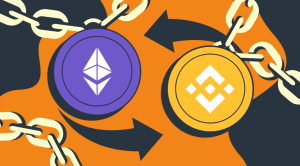
In recent weeks, a cloud of uncertainty has shrouded the DeFi (Decentralized Finance) community, centering on the protocol named Multi-Chain. Rumors of arrests, missing CEOs, inaccessible critical infrastructure, and large token transfers have spurred conjectures and concerns about the protocol’s health and future. This article examines the recent developments around Multi-Chain, their implications for DeFi investors, and the wider ripple effects in the blockchain ecosystem.
Multi-Chain is a DeFi protocol designed to facilitate the transfer of tokens across different blockchains. According to DeFi Llama, an analytics platform for DeFi projects, Multi-Chain currently supports over 50 blockchains and holds around $1.5 billion in cryptocurrencies. However, its recent troubles have cast a shadow over this otherwise promising platform.
Rumors started circulating a few weeks ago that members of the Multi-Chain team, including the CEO, had been arrested in China. These rumors gained credence when Multi-Chain confirmed that it had indeed lost contact with its CEO. Furthermore, it revealed that this unexpected development had hampered access to vital infrastructure, leading to operational difficulties for the protocol.
More alarmingly, on-chain data showed that large amounts of the protocol’s native token, MULTI, were being transferred to the cryptocurrency exchange Gate.io. This revelation sparked speculation that Gate.io was somehow implicated in the unfolding drama, raising concerns about the exchange’s solvency. The situation was further exacerbated when some users reported issues with withdrawing their assets from Gate.io, fanning the flames of the insolvency concerns.
In response to these worrying developments, Gate.io issued a statement assuring its users that it did not have any solvency issues. The exchange went on to state that users could verify this for themselves by utilizing its Proof of Reserves feature, a tool that allows users to check the veracity of the platform’s asset claims.
Gate.io also highlighted that it was in the process of registering with the regulator in Hong Kong to offer cryptocurrency trading services to retail investors in the region. This move was strategically significant; it implied that the exchange was confident about its financial health. After all, no entity would willingly submit to regulatory scrutiny if it were indeed insolvent, as regulators would inevitably detect financial issues and reject the registration application.
Despite Gate.io’s assurances, the incident has underlined the inherent risks and volatility in the DeFi space. The mystery surrounding Multi-Chain’s CEO, the sudden surge in token transfers, and the subsequent panic among investors serve as a stark reminder of the potential pitfalls in this burgeoning sector of the blockchain industry.
Investors in DeFi projects are typically attracted by the promise of high returns and the prospect of participating in the cutting-edge world of blockchain technology. However, as the Multi-Chain episode demonstrates, the sector can sometimes resemble the Wild West, with its mix of opportunity, danger, and lawlessness.
The Multi-Chain controversy underscores the importance of regulatory oversight and robust risk management practices in the DeFi sector. In a world where billion-dollar protocols can be destabilized overnight, investors and platform operators alike need to be vigilant and proactive.
Moving forward, it will be interesting to observe how the Multi-Chain saga unfolds, how it influences the DeFi landscape, and whether it spurs renewed calls for greater transparency and regulatory oversight in this segment of the blockchain industry.





